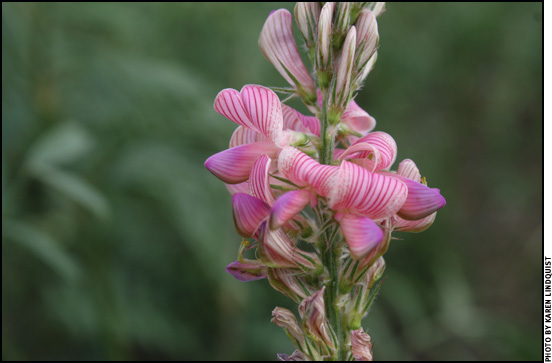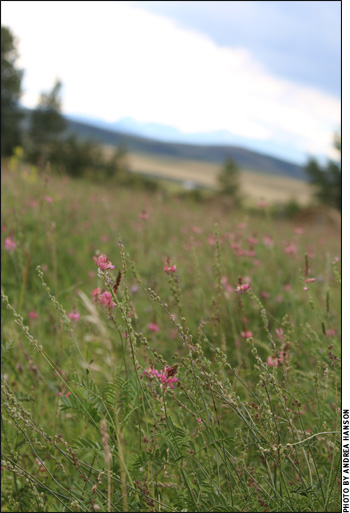
Sainfoin Causes Less Risk for Bloat
Legumes are beneficial in pastures because they contain more protein and minerals than grasses, but some legumes carry risk for bloat.
While there are many benefits to legumes in terms of nutrition and soil health, they also carry risk for bloat. A legume under study lately for livestock forage is sainfoin. Andrea Hanson, beef extension specialist for Alberta Agriculture and Forestry, has been working with managers, producers, and 11 applied research and extension associations across Alberta on a two-year study called the High Legume Pasture Project.
The first year was focused on establishing sainfoin as part of a high-legume pasture mix at 12 sites across Alberta, and the second year looked at grazing those sites. Some producer cooperators had very good establishment on the first year, while others did not — either because of too much or too little moisture, weeds or some other reasons, she says.

Many producers have had bad experiences with alfalfa and bloat, but with sainfoin added, this risk is greatly reduced.
“Grazing the second year provided a variety of experiences. Some producers had better forage establishment from the first year and were able to graze effectively. Sainfoin reduces the risk for bloat, even in pastures that also have alfalfa, because sainfoin contains tannins that bind excess plant protein (often associated with alfalfa). The tannins precipitate these excess proteins out of the rumen fluid, preventing the creation of stable foam that forms in pasture bloat,” explains Hanson.
Many producers have had bad experiences with alfalfa and bloat, but with sainfoin added, this risk is greatly reduced. Grazing research at Lethbridge and Swift Current showed a 95% to 98% reduction in bloat when sainfoin makes up 25% of a sainfoin-alfalfa stand.
“With weather unpredictability, having a more diversified stand allows different plants to thrive in different conditions, and we get more drought resistance. Legumes have a deep taproot and can penetrate deeper into the soil profile where there is more moisture. Poor-producing pastures with few or no legumes run the risk of depletion earlier in the grazing season and the producer has to feed hay earlier,” she notes.
Without legumes you may have less pasture and less quality of forage for the cattle.
“The sainfoin we used for this project has a growth pattern more like alfalfa and can withstand grazing better than previous varieties. A concern with sainfoin in the past is that it would be grazed out too quickly and then the risk of bloat is back again with the alfalfa that remains,” she explains. This new variety of sainfoin is better for grazing.
The focus in this project was to have 60% or more legumes and 40% other forage species. The cooperating producers chose whatever else they wanted to put with the legumes; they could use grasses, or more legumes like bird’s-foot trefoil or more alfalfa, she says.
“From the year of grazing experience, one of the most notable observations was the importance of seed set for longevity of a high-legume forage stand — the need for some recovery time and regrowth — for natural reseeding. The 2017 growing season was really dry in parts of Alberta, then in the fall we did get some moisture. One site was left ungrazed by the cooperator/producer until fall, so there was seed set and germination.” Under the right conditions sainfoin will reseed itself, if given a chance.
“We have to remember when grazing it to leave some, so the plants can produce seed,” she says.

Editor’s Note: Heather Smith Thomas is a cattlewoman and freelance writer from Salmon, Idaho.






